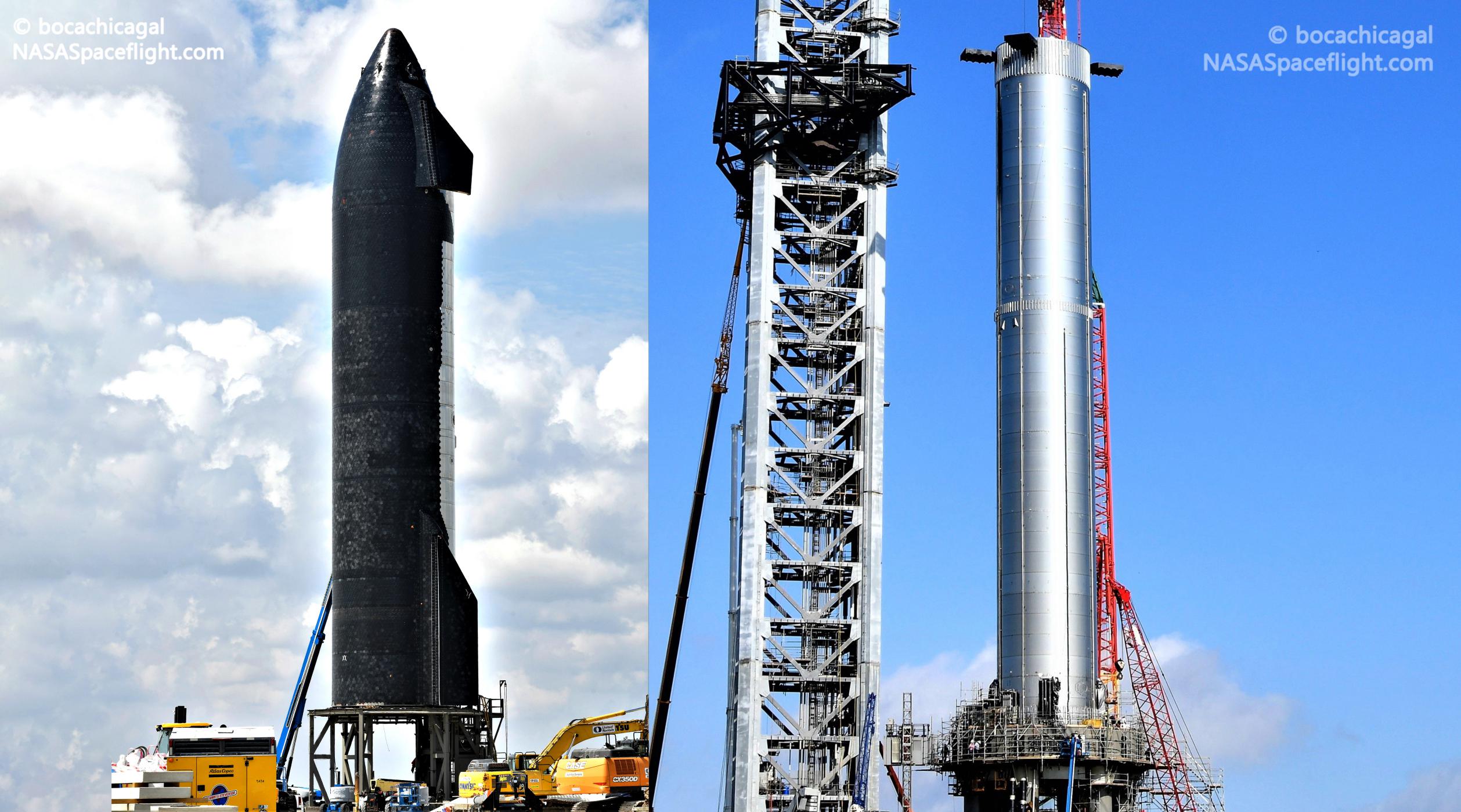
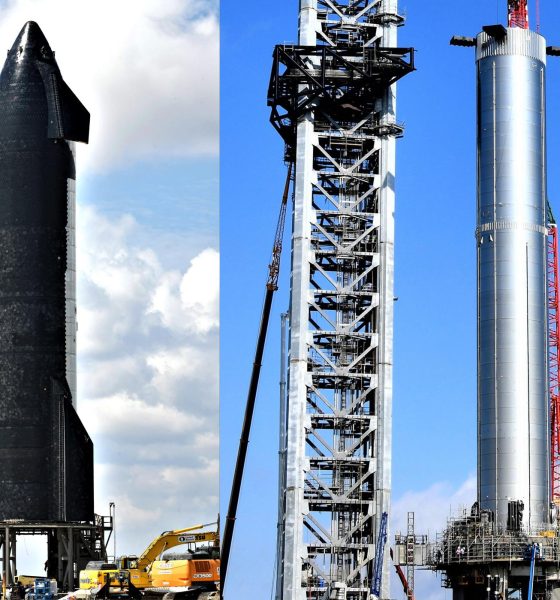
News
SpaceX prepares Starship, Super Heavy for milestone Raptor static fire tests
SpaceX has scheduled a full week with as many as 30 hours of road and beach closures for Starship and Super Heavy testing and is working hard to prepare the first orbital-class ship and booster for several major challenges.
First rolled to SpaceX’s Starbase orbital launch site more than six weeks ago and stacked together for the first time on August 6th, the company has spent the last month putting the finishing touches on Starship 20 (S20) and Super Heavy Booster 4 (B4) – ranging from heat shield installation to plumbing and wiring. Perhaps most importantly, SpaceX has also installed some or all of the Raptor engines that are expected to support the ship and boosters’ first static fire qualification tests.
For a number of reasons, those static fires – and a few additional tests expected to precede them – could be huge milestones for SpaceX’s Starship program.
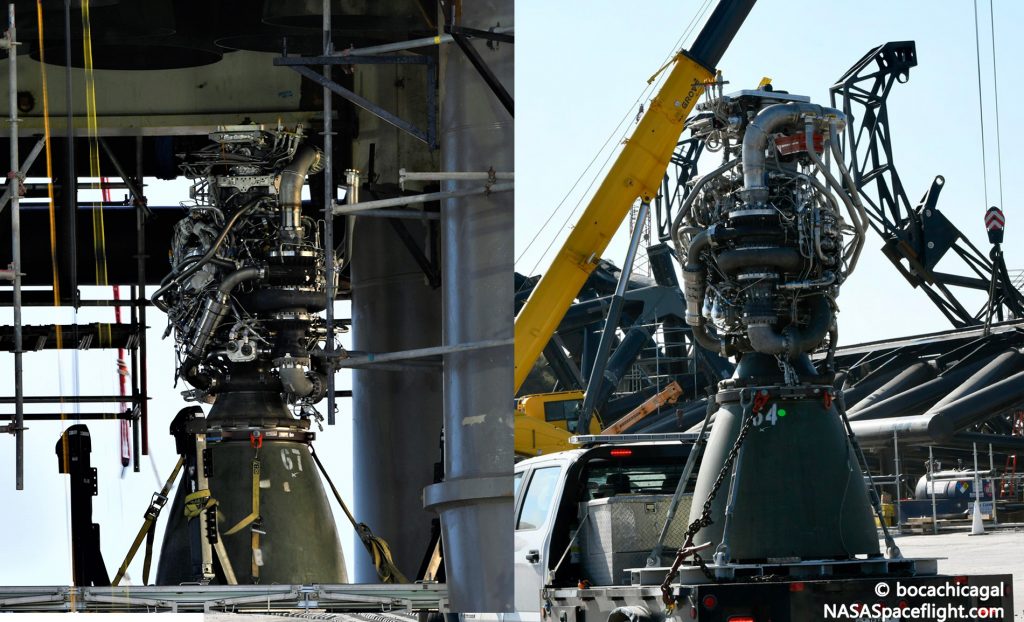
Earlier this month, after rolling Starship S20 to the launch pad for the second time and installing it on one of two suborbital launch/test mounts, SpaceX began the process of installing Raptor engines (again for the second time) on the rocket. Beginning with two center sea level-optimized Raptors, SpaceX then installed a Raptor Vacuum engine on Ship 20. The implication: when S20 fires up for the first time, it might be doing so with two kinds of Raptor engines – a first for the Starship program.
Since Raptor Vacuums first began static fire testing at SpaceX’s McGregor, Texas development campus around Q4 2020, the company has yet to fire up an RVac engine on a Starship prototype. Starship’s current design features three gimballing sea-level Raptors and three vacuum-optimized variants with much larger nozzles – all in close proximity inside a 9m-wide (30 ft) skirt.
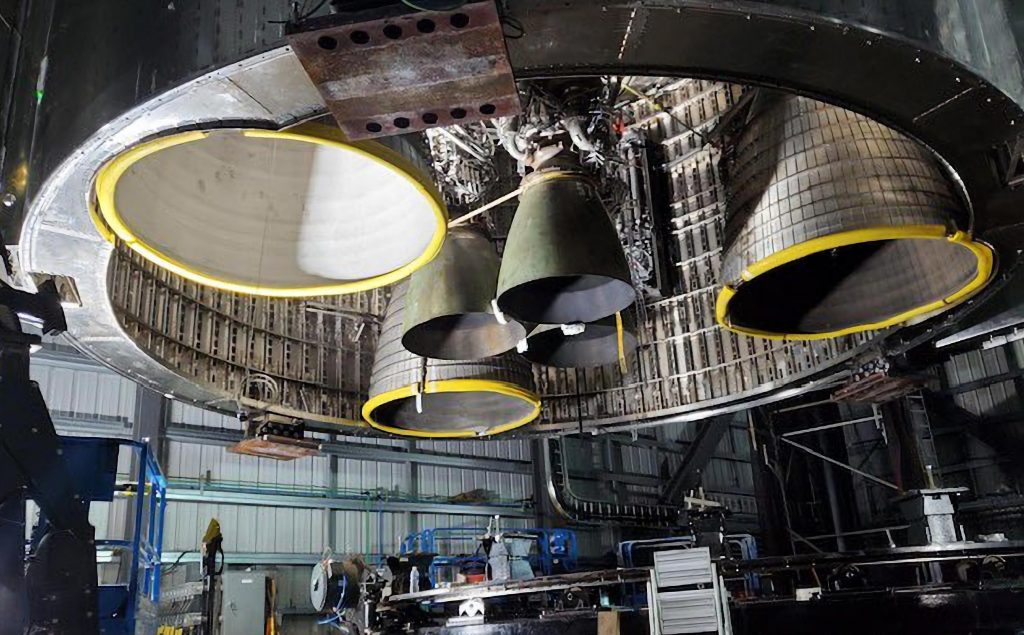

As such, the first Starship static fire with any combination of Raptor Center and Raptor Vacuum engines will be a significant milestone for SpaceX. Eventually, that will likely culminate in the first static fire(s) of a Starship (likely S20) with all six Raptors installed – a test that will effectively qualify that prototype for its first orbital launch attempt.
Meanwhile, things are arguably even more complex for Super Heavy. Aside from a single three-engine static fire completed by Super Heavy Booster 3 (B3), Starship’s first stage has never come close to a full-up static fire with all 29-33 Raptor engines installed. Whenever that occurs, Super Heavy will likely become the most powerful rocket ever tested and – like with Starship – will be more or less qualified for its first flight if the test goes according to plan.
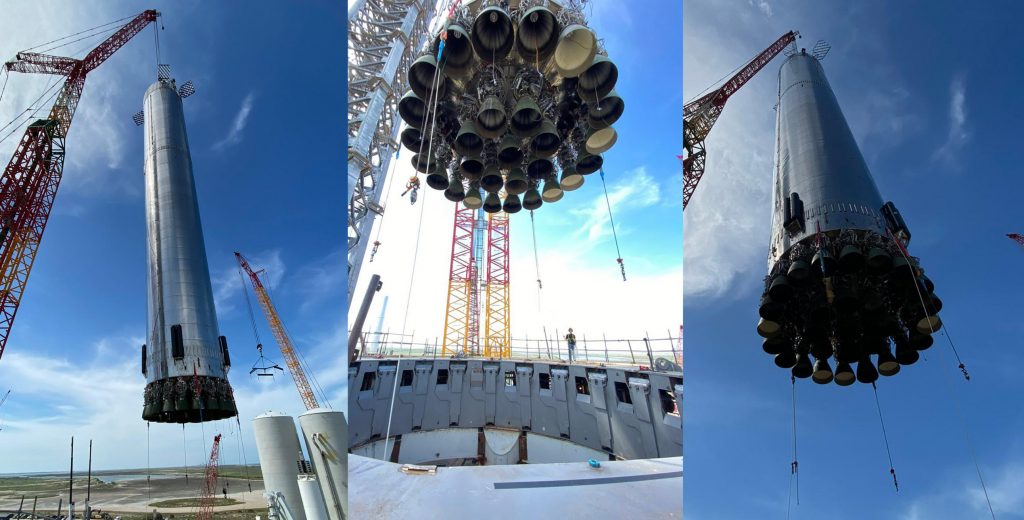
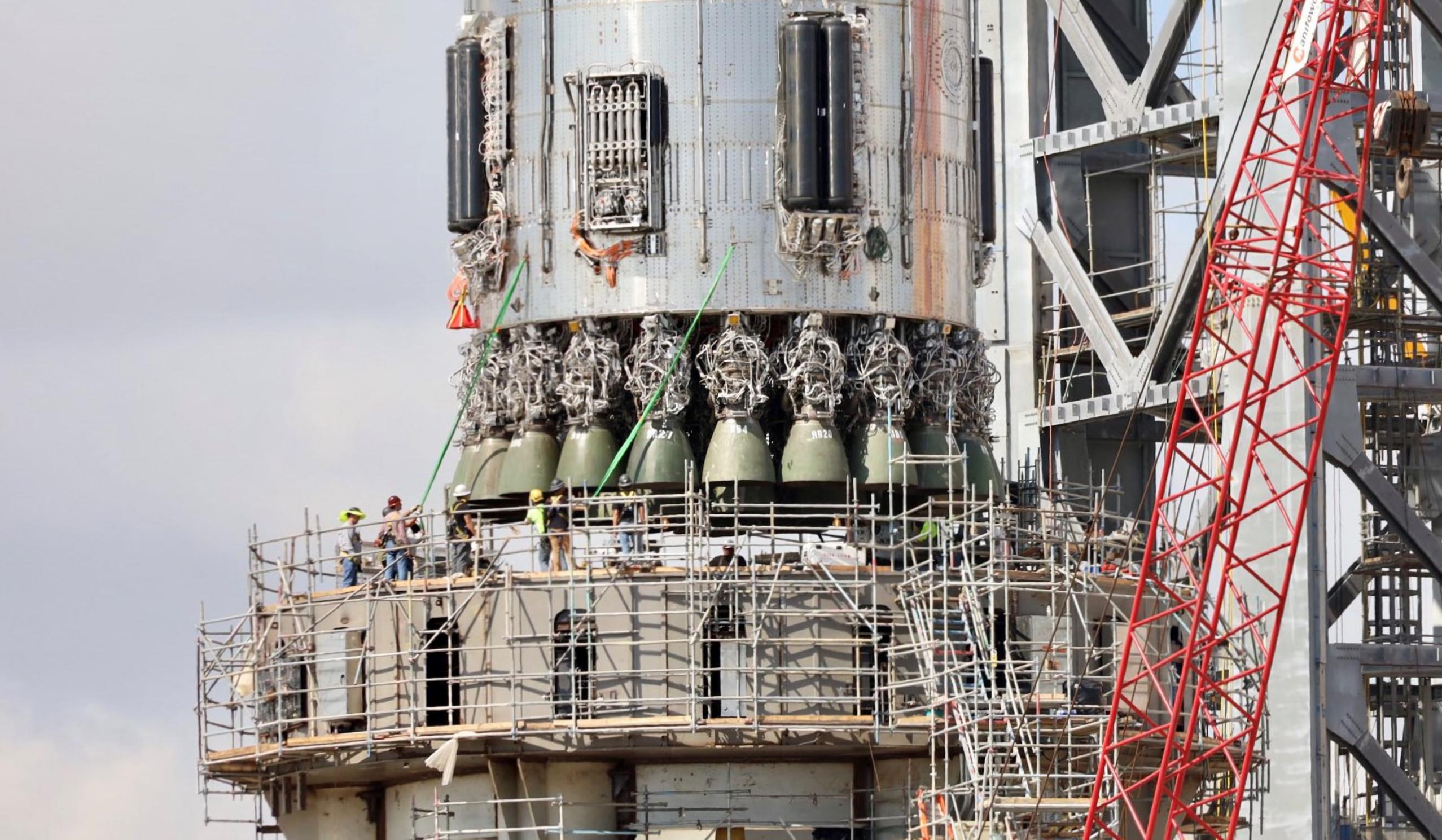
SpaceX already installed a full 29 Raptor engines on Super Heavy B4 last month. After returning to Starbase, those engines were removed and eventually reinstalled a few weeks later – albeit with a number of replacements. Now, having spent the last 11 days sitting on the orbital pad’s launch mount, SpaceX has begun to replace at least one of Booster 4’s 29 installed engines. It’s unclear why but the fact that SpaceX is replacing engines at the launch pad – instead of rolling Super Heavy back to the build site for the third time – is an encouraging sign that B4 is nearly ready for its first proof and static fire tests.
Due to all the recent activity, it’s almost impossible to tell whether Starship S20 or Super Heavy B4 will be first onto the figurative saddle for ambient pressure, cryogenic, and static fire proof testing. What is clear, though, is that SpaceX has five six-hour testing windows scheduled every day next week. Stay tuned for updates on the next steps for SpaceX’s first orbital-class ship and booster pair.

News
Tesla aims to combat common Full Self-Driving problem with new patent
Tesla writes in the patent that its autonomous and semi-autonomous vehicles are heavily reliant on camera systems to navigate and interact with their environment.

Tesla is aiming to combat a common Full Self-Driving problem with a new patent.
One issue with Tesla’s vision-based approach is that sunlight glare can become a troublesome element of everyday travel. Full Self-Driving is certainly an amazing technology, but there are still things Tesla is aiming to figure out with its development.
Unfortunately, it is extremely difficult to get around this issue, and even humans need ways to combat it when they’re driving, as we commonly use sunglasses or sun visors to give us better visibility.
Cameras obviously do not have these ways to fight sunglare, but a new patent Tesla recently had published aims to fight this through a “glare shield.”
Tesla writes in the patent that its autonomous and semi-autonomous vehicles are heavily reliant on camera systems to navigate and interact with their environment.

The ability to see surroundings is crucial for accurate performance, and glare is one element of interference that has yet to be confronted.
Tesla described the patent, which will utilize “a textured surface composed of an array of micro-cones, or cone-shaped formations, which serve to scatter incident light in various directions, thereby reducing glare and improving camera vision.”

The patent was first spotted by Not a Tesla App.
The design of the micro-cones is the first element of the puzzle to fight the excess glare. The patent says they are “optimized in size, angle, and orientation to minimize Total Hemispherical Reflectance (THR) and reflection penalty, enhancing the camera’s ability to accurately interpret visual data.”
Additionally, there is an electromechanical system for dynamic orientation adjustment, which will allow the micro-cones to move based on the angle of external light sources.
This is not the only thing Tesla is mulling to resolve issues with sunlight glare, as it has also worked on two other ways to combat the problem. One thing the company has discussed is a direct photon count.
CEO Elon Musk said during the Q2 Earnings Call:
“We use an approach which is direct photon count. When you see a processed image, so the image that goes from the sort of photon counter — the silicon photon counter — that then goes through a digital signal processor or image signal processor, that’s normally what happens. And then the image that you see looks all washed out, because if you point the camera at the sun, the post-processing of the photon counting washes things out.”
Future Hardware iterations, like Hardware 5 and Hardware 6, could also integrate better solutions for the sunglare issue, such as neutral density filters or heated lenses, aiming to solve glare more effectively.
Elon Musk
Delaware Supreme Court reinstates Elon Musk’s 2018 Tesla CEO pay package
The unanimous decision criticized the prior total rescission as “improper and inequitable,” arguing that it left Musk uncompensated for six years of transformative leadership at Tesla.

The Delaware Supreme Court has overturned a lower court ruling, reinstating Elon Musk’s 2018 compensation package originally valued at $56 billion but now worth approximately $139 billion due to Tesla’s soaring stock price.
The unanimous decision criticized the prior total rescission as “improper and inequitable,” arguing that it left Musk uncompensated for six years of transformative leadership at Tesla. Musk quickly celebrated the outcome on X, stating that he felt “vindicated.” He also shared his gratitude to TSLA shareholders.
Delaware Supreme Court makes a decision
In a 49-page ruling Friday, the Delaware Supreme Court reversed Chancellor Kathaleen McCormick’s 2024 decision that voided the 2018 package over alleged board conflicts and inadequate shareholder disclosures. The high court acknowledged varying views on liability but agreed rescission was excessive, stating it “leaves Musk uncompensated for his time and efforts over a period of six years.”
The 2018 plan granted Musk options on about 304 million shares upon hitting aggressive milestones, all of which were achieved ahead of time. Shareholders overwhelmingly approved it initially in 2018 and ratified it once again in 2024 after the Delaware lower court struck it down. The case against Musk’s 2018 pay package was filed by plaintiff Richard Tornetta, who held just nine shares when the compensation plan was approved.
A hard-fought victory
As noted in a Reuters report, Tesla’s win avoids a potential $26 billion earnings hit from replacing the award at current prices. Tesla, now Texas-incorporated, had hedged with interim plans, including a November 2025 shareholder-approved package potentially worth $878 billion tied to Robotaxi and Optimus goals and other extremely aggressive operational milestones.
The saga surrounding Elon Musk’s 2018 pay package ultimately damaged Delaware’s corporate appeal, prompting a number of high-profile firms, such as Dropbox, Roblox, Trade Desk, and Coinbase, to follow Tesla’s exodus out of the state. What added more fuel to the issue was the fact that Tornetta’s legal team, following the lower court’s 2024 decision, demanded a fee request of more than $5.1 billion worth of TSLA stock, which was equal to an hourly rate of over $200,000.
Delaware Supreme Court Elon Musk 2018 Pay Package by Simon Alvarez
News
Tesla Cybercab tests are going on overdrive with production-ready units
Tesla is ramping its real-world tests of the Cybercab, with multiple sightings of the vehicle being reported across social media this week.

Tesla is ramping its real-world tests of the Cybercab, with multiple sightings of the autonomous two-seater being reported across social media this week. Based on videos of the vehicle that have been shared online, it appears that Cybercab tests are underway across multiple states.
Recent Cybercab sightings
Reports of Cybercab tests have ramped this week, with a vehicle that looked like a production-ready prototype being spotted at Apple’s Visitor Center in California. The vehicle in this sighting was interesting as it was equipped with a steering wheel. The vehicle also featured some changes to the design of its brake lights.
The Cybercab was also filmed testing at the Fremont factory’s test track, which also seemed to involve a vehicle that looked production-ready. This also seemed to be the case for a Cybercab that was spotted in Austin, Texas, which happened to be undergoing real-world tests. Overall, these sightings suggest that Cybercab testing is fully underway, and the vehicle is really moving towards production.
Production design all but finalized?
Recently, a near-production-ready Cybercab was showcased at Tesla’s Santana Row showroom in San Jose. The vehicle was equipped with frameless windows, dual windshield wipers, powered butterfly door struts, an extended front splitter, an updated lightbar, new wheel covers, and a license plate bracket. Interior updates include redesigned dash/door panels, refined seats with center cupholders, updated carpet, and what appeared to be improved legroom.
There seems to be a pretty good chance that the Cybercab’s design has been all but finalized, at least considering Elon Musk’s comments at the 2025 Annual Shareholder Meeting. During the event, Musk confirmed that the vehicle will enter production around April 2026, and its production targets will be quite ambitious.








